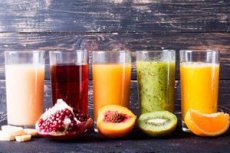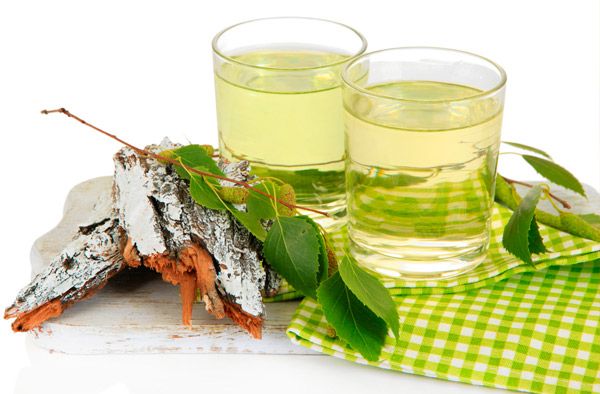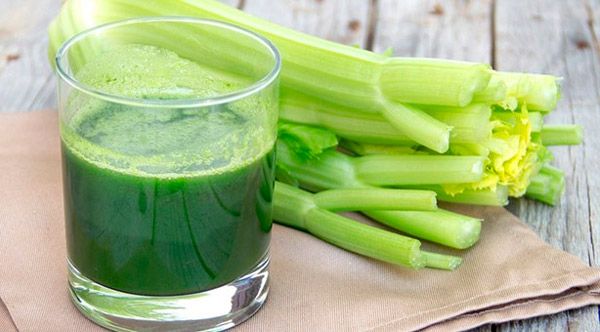Medical expert of the article
New publications
Juices for pancreatitis: freshly squeezed, vegetable, fruit juices
Last reviewed: 04.07.2025

All iLive content is medically reviewed or fact checked to ensure as much factual accuracy as possible.
We have strict sourcing guidelines and only link to reputable media sites, academic research institutions and, whenever possible, medically peer reviewed studies. Note that the numbers in parentheses ([1], [2], etc.) are clickable links to these studies.
If you feel that any of our content is inaccurate, out-of-date, or otherwise questionable, please select it and press Ctrl + Enter.

Pancreatitis is an inflammation of the pancreas, which is an important organ in the human body. Its functions include ensuring digestion, energy metabolism, etc. Its enzymes help digest proteins, carbohydrates, and fats in the intestine. At first, inactive enzymes are synthesized in it, then they enter the duodenum through the duct, where they are activated. If the outflow is impaired, their activation occurs in the pancreas, instead of digesting food, its own tissues are eaten. This is how acute inflammation occurs. Chronic inflammation is accompanied by the formation of scar tissue, which becomes a barrier to the production of enzymes and insulin. Treatment of an acute condition involves 2-3 days of fasting, drug therapy, and adherence to a strict diet. But is it possible to drink juices with chronic pancreatitis?
Treatment of pancreatitis with juices
Pancreatitis in the acute stage excludes the intake of any juices. But in the state of remission, some of them are even useful, because they have a therapeutic effect on the organ. The positive aspect of juices is the absence of fiber, a high content of vitamins and minerals, low calorie content, easy digestibility. On the other hand, juices contain organic acids that irritate the mucous membrane of the digestive tract, they are rich in carbohydrates, which means they raise the level of glucose in the blood, provoke fermentation in the intestines, and can cause allergies. What outweighs, benefit or harm? There are a number of rules, subject to which juices remain on the menu of patients with pancreatitis.
Freshly squeezed juices for pancreatitis
The first requirement is that juices for pancreatitis must be freshly squeezed. Neither canned, nor frozen, nor store-bought will do. Also, at first after an exacerbation, they must be diluted by half with water and gradually switch to pure ones, but in small volumes. The raw materials for their preparation must be scrupulously selected, stopping at undamaged ripe juicy fruits. The juice should be drunk immediately after squeezing.
Vegetable juices
Pancreatitis is a disease that requires a revision of your diet, dietary restrictions. Therefore, many vegetable juices for pancreatitis will become a pleasant and useful addition to the menu, will strengthen the body. In folk recipes for the treatment of pathologies of the digestive organs, various of them are present.
- Potato juice for pancreatitis. It is appropriate only in case of persistent remission. It is used as an anti-inflammatory, antispasmodic, tonic, and also has a beneficial effect on cardiac activity, lowers blood pressure. It contains many minerals (fluorine, magnesium, copper, manganese, phosphorus, boron, iodine, iron, etc.), proteins, fats, vitamins (C, group B - B1, 2, 5, 6, 9, A, PP, E, K, etc.). You need to start drinking with a small dose, literally a teaspoon, gradually increasing and bringing to 100-200 ml daily. Not recommended in pure form for diabetics and people with reduced enzymatic function.
- Tomato juice for pancreatitis. This favorite drink of many is unacceptable for acute pancreatitis due to the succinic, oxalic, citric, and tartaric organic acids it contains. They stimulate the production of gastric juice and aggressive pancreatic enzymes, aggravating inflammation and promoting gas formation. The chronic course of the disease allows small portions if the juice is first diluted with two parts of water, then prepared in equal parts of each. The drink has an antimicrobial, antioxidant, and antidepressant effect. It contains various microelements and vitamins. If the juice is well tolerated, you can increase the daily intake to 100 ml of pure juice or 250 ml of water diluted with a third.
- Carrot juice for pancreatitis. Freshly squeezed carrot juice tastes very good, and it also contains a lot of vitamin A and beta-carotene. It brings many benefits to the body: improves vision, strengthens the immune system, normalizes fat metabolism, and prevents cells from aging. However, it should not be taken during exacerbations of the pathology, because it contains a lot of sugar, and insulin is needed for its absorption, the production of which is often complicated by inflammation of the pancreas. This can cause the development of diabetes. During remission, there are no contraindications if you introduce it into the diet gradually, diluting it with water (initially 1:3, gradually increasing the concentration). Carrot juice goes well with others, which makes it possible to prepare tasty and healthy mixes based on it. And yet it is not suitable for daily use. Half a glass 2-3 times a week is the best option.
- Beetroot juice. Although it is credited with miraculous powers, in case of pancreatitis it is necessary to be very careful. It contains a lot of iron, so it plays a positive role in hematopoiesis, relieves nervous tension, calms, promotes good sleep, reduces blood pressure, and has a good effect on the cardiovascular system. At the same time, the high content of amino acids causes inflammation of the mucous membrane of the digestive tract, and the high level of sugars makes it an undesirable component. During periods of exacerbation, beetroot juice is strictly prohibited. During stable remission, a small dose of the drink is possible if certain rules are followed. This means the following: after preparation, it should stand for 2-3 hours in a cool place; it is best combined with carrot and pumpkin; you need to start with small doses - one small spoon, increasing by the same amount with each subsequent dose, but not more than 50 ml per day; the frequency of use is 1-2 times a week.
- Cabbage juice. Cabbage is rich in ascorbic acid, vitamin K, group B, rare and not synthesized by the body vitamin U, magnesium, potassium, calcium, iron and other minerals. Cabbage juice is very useful and is used in folk medicine to treat many pathologies (gastritis, ulcers, colitis, etc.). But the diagnosis of pancreatitis imposes a taboo on it.
- Pumpkin juice for pancreatitis. Pumpkin is a healthy product with a distinctive taste, used even in haute cuisine recipes. But fresh pumpkin juice is not suitable for inflammation of the pancreas. A large number of organic acids causes fermentation in the intestines, further irritates the mucous membrane, provoking an exacerbation. Only after completely eliminating the manifestations of pancreatitis can you carefully introduce the drink into your diet, first diluting it with water or other juices, then switching to pure juice. Thanks to carotene, it improves vision, potassium - strengthens the heart muscle, antioxidants - provides anti-cancer protection, pectin - removes toxins, harmful cholesterol. In addition, the drink is low-calorie - all this gives it the right to remain in our menu. Depending on tolerance, the maximum daily dose can fluctuate between 250-500 ml.
Birch sap
Birch sap is the most useful of all existing ones for pancreatitis, it has only one drawback - a short season of collection, and therefore, consumption fresh. Its uniqueness lies in the ability to restore metabolism due to biogenic stimulants and enzymes. It contains vitamins, fructose, glucose, iron, calcium, many organic acids. Nature itself has balanced its composition so that a person only needs to drink, enriching the body with medicinal components.

In acute pancreatitis, only fresh juice is suitable. To treat chronic pancreatitis, you can make an oat drink by adding a glass of oats to a liter of juice. After 10 hours in the refrigerator, remove the oats, and boil the infusion until half the liquid evaporates. In this form, it can be stored for some time in a cold place. Take 150 ml half an hour before meals.
Pomegranate juice
Despite the many beneficial properties of this fruit, pomegranate juice is strictly prohibited during an exacerbation of pancreatitis.
What is beneficial for a healthy person (phytoncides, 15 amino acids, antioxidants), will further aggravate the painful condition with inflammation of the pancreas. Therefore, you can drink pomegranate juice only after completely getting rid of the symptoms and then in a diluted form. The maximum you can drink per day is 200-300 ml.
Aloe juice
Aloe is popularly considered a plant "for everything". Due to the content of the substance allantoin, aloe has anti-inflammatory, astringent, anesthetic effects. These qualities give the right to be present in many recipes aimed at healing wounds and ulcers, therapy of the digestive tract, in dermatology, gynecology, ophthalmology, cosmetology, etc. Treatment of pancreatitis with aloe juice is based on its effect on the secretion of bile, which is directly dependent on the normal functioning of the pancreas. Aloe juice for pancreatitis is used in combination with honey after the exacerbation phase.
It is best to take the so-called capped honey, which is in the honeycombs. To seal it, bees use a special substance secreted by the salivary and wax glands. The composition of such honey is very useful in the treatment of various inflammatory pathologies. The potion is prepared by mixing a tablespoon of honey and the same amount of aloe. Having combined them, you can take before meals, but not more than one spoon per day.
Apple juice
Apple juice is the most accessible of all, because this fruit grows in our climate zone and is well stored in winter. The fruits can be used as early as the third day of exacerbation in the form of jelly and compotes. Apple juice for pancreatitis is used during the period of remission. Juicy, sweet, ripe fruits are used for its preparation.
Before grinding, peel the skin, then remove the pulp and dilute in a 1:1 ratio with water. Over time, you can use the undiluted drink, with the exception of industrially produced juices. It is best to drink 1-2 glasses per day an hour after eating, so as not to irritate the mucous membrane.
Lemon juice
Lemon is a very sour fruit, it contains 8% citric acid, which is quite a high concentration. Therefore, lemon juice is not allowed for acute pancreatitis, as well as its chronic form, despite all its beneficial properties.
Celery juice
Celery is popular due to its content of essential oils, vegetable fats, polyunsaturated fatty acids. But due to excessive stimulation of the secretion of enzymes by the pancreas, its use at the acute stage is strictly prohibited.

Only a month after the inflammatory process has subsided can you start using the root in cooking as part of soups after heat treatment. Drinking celery juice for pancreatitis is possible only after a well-established recovery, not earlier than a year and a half after the outbreak of the disease.
 [ 9 ]
[ 9 ]
Plantain juice
Plantain is a medicinal plant that is a storehouse of useful elements: glycosides, organic acids, phytoncides, flavonoids, alkaloids, tannins, polysaccharides, etc. It is used in the treatment of skin diseases, gastritis with low acidity, colitis, dyspepsia. Its tonic, immune-boosting, and calming effects are well known. Fresh plantain juice is suitable for chronic pancreatitis. The leaves are washed, doused with boiling water, chopped with a meat grinder or blender, then filtered through several layers of gauze. The resulting juice is diluted half with water and boiled for several minutes. Drink 20 minutes before meals, one dessert spoon three times a day. The course of treatment can last up to a month.
Orange juice
Citrus juices, including orange juice, should be used with caution in case of pancreatitis. Their use is excluded in the acute period of the disease. Its chronic course allows juice from sweet varieties of the fruit, preferably with the addition of water.
The disadvantage of orange juice is its high sugar content. Considering that diabetes is associated with pancreatic dysfunction, it is better to give it up completely.
Grape juice
Grapes are far ahead of other fruits in terms of the usefulness of their composition. They boost immunity, improve blood formation and the work of the heart muscle, tone muscles, and remove salts from the body. But they contain many organic acids that help activate the production of enzymes for digestion.
Accumulating in the organ, they destroy it. In addition, grapes are rich in glucose, which contributes to the development of diabetes. This makes grape juice undesirable for pancreatitis. The only indication for it is chronic pancreatitis against the background of low acidity, but in the absence of diabetes.

